Did you know that motorcyclists face a risk of death nearly 28 times higher than car occupants in the event of a crash? Taking the right steps toward motorcycle accident prevention can mean the difference between a safe ride and a life-altering tragedy. Every ride offers a chance to stay safe, but only if you know how to avoid costly mistakes. In this comprehensive guide, you’ll discover practical strategies to reduce your risk, debunk common myths, and protect yourself before your next journey begins.
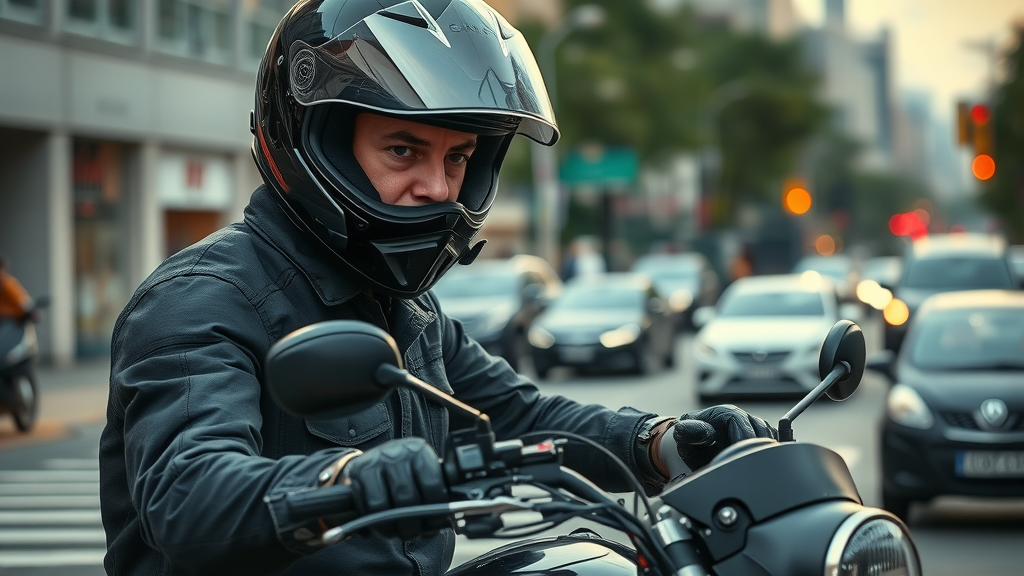
The Real Cost of Ignoring Motorcycle Accident Prevention
Did you know that motorcyclists are nearly 28 times more likely to die in a crash than occupants of cars? The difference between caution and carelessness is often a matter of life and death.
Choosing to overlook motorcycle accident prevention is a mistake that can have severe and lasting repercussions. For every minor mishap you hear about, hundreds of unreported crashes leave riders with significant injuries, financial burdens, and emotional scars. Unlike accidents in cars, where built-in safety features cushion much of the impact, motorcycle accidents almost always result in the rider bearing the brunt of the collision.
Beyond the tragic loss of life or long-term disability, the financial cost associated with motorcycle crashes is staggering. Medical bills, property damage, increased insurance premiums, and even legal fees can accumulate rapidly, placing significant strain on you and your loved ones. Families are often forced to cope with the sudden loss of income and the prolonged process of physical and emotional recovery. Ignoring basic precautionary steps not only jeopardizes your safety but also puts everything you work for at risk.
Why Motorcycle Accident Prevention is Non-Negotiable
- Statistics on motorcycle accidents and fatalities: According to the National Highway Traffic Safety Administration (NHTSA), motorcycle riders make up a disproportionate number of crash fatalities, despite representing a small fraction of registered vehicles. The risk of serious injury or death is significantly higher for motorcycle riders versus car drivers in a vehicle crash.
- Financial and emotional impact on motorcycle riders and their families: The average hospital stay due to a motorcycle crash often far exceeds those for car accidents. Medical bills, lost wages, and ongoing therapy can devastate personal finances—driving home the high cost of ignoring accident prevention.
- Long-term consequences of neglecting motorcycle safety: It's not just about today; head injuries , spinal cord damage, and emotional trauma linger for years. This ripple effect often extends beyond the rider, impacting entire families and communities.
Ultimately, the cost of neglecting motorcycle safety is measured not just in dollars but in lives and futures changed forever. That's why every rider, new or experienced, must take a proactive approach toward motorcycle accident prevention —your safety is non-negotiable.
Key Motorcycle Accident Prevention Strategies Every Rider Should Know
Mastering Motorcycle Safety: Habits for Every Journey
- Performing regular motorcycle safety checks
- Pre-ride inspections and post-ride reviews
- Recognizing hazardous riding conditions
Motorcycle accident prevention begins long before you pull out of the driveway. Thorough pre-ride inspections are essential: check tire pressure and tread, test lights and signals, inspect the brakes, and confirm fluid levels. A post-ride review, including checking for oil leaks or loose bolts, helps catch issues before they escalate. These consistent safety checks are the foundation of responsible riding and drastically reduce the risk of sudden mechanical failure on the road.
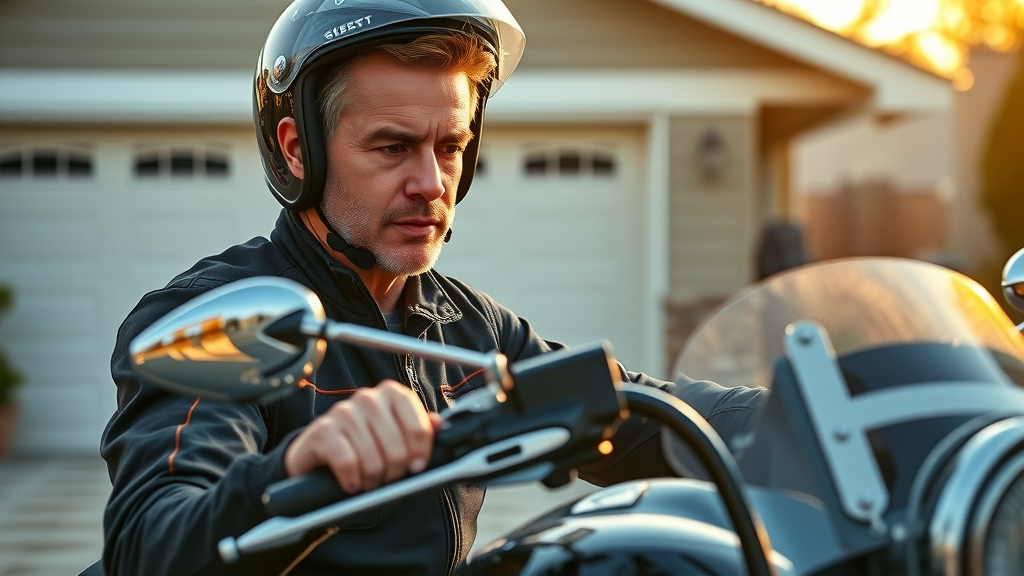
After basic maintenance, riders must develop the habit of scanning for hazardous conditions such as wet roads, gravel, or unexpected debris. Checking the weather forecast and planning your route in advance also minimize risks from poor riding conditions. These proactive steps are small investments of time that pay off with every safe journey.
Riding a Motorcycle Responsibly: Understanding Traffic Laws
- Adhering to local traffic laws to prevent a motorcycle accident
- Key rules every motorcycle rider must follow
- The impact of following or ignoring helmet law regulations
Adherence to traffic laws is a non-negotiable pillar of motorcycle accident prevention . Always obey posted speed limits, use turn signals consistently, and respect right-of-way rules—especially in complex intersections, where the majority of motorcycle accidents occur. Remember, other vehicles may not always see a motorcycle rider in their blind spot, making your vigilance essential for traffic safety.
One of the most critical regulations concerns helmet law compliance. State and local helmet laws vary, but the data is clear—wearing a Department of Transportation (DOT) approved helmet drastically reduces the likelihood of a head injury or fatality in a motorcycle crash. Following helmet laws not only protects your health but can also prevent costly citations and insurance issues.
The Truth Behind Helmet Laws and Motorcycle Helmet Effectiveness
| State Helmet Laws | Fatality Rates | Injury Rates | Helmet Law Impact (Yes/No) |
|---|---|---|---|
| California | Lowest | Low | Yes |
| Florida | Moderate | Moderate | Yes (Partial) |
| Texas | High | High | No |
The effectiveness of a motorcycle helmet is well-established. In states with universal helmet laws , fatality and injury rates are significantly lower than in states without such regulations. California, for example, has implemented comprehensive helmet law policies and boasts some of the lowest motorcycle accident fatality rates nationwide. Conversely, states like Texas, with no universal helmet law, experience the highest fatal and serious injury rates among motorcycle riders.
Ignoring or resisting helmet law enforcement isn't just a minor infraction—it dramatically increases the odds of suffering a life-changing head injury . While the laws themselves differ, the underlying science remains clear: if you want to reduce the risk during a motorcycle crash, always wear a helmet designed to meet or exceed DOT or international standards.
Helmets and Beyond: Protective Gear to Reduce Motorcycle Accident Injuries
- Choosing a compliant motorcycle helmet for maximum motorcycle safety
- Importance of riding gear: jackets, boots, gloves, and pants
- How to properly wear a helmet to minimize risk
A motorcycle helmet is the most critical piece of safety equipment, but full protective gear completes the safety envelope for any motorcycle rider. Look for helmets labeled with DOT, ECE, or Snell certification—this ensures your helmet meets minimum impact and penetration resistance requirements. Fit matters, too: a secure, snug helmet prevents slippage and provides maximum defense against head injury in a vehicle crash.

Beyond helmets, premium jackets with armor plating, abrasion-resistant pants, sturdy boots, and reinforced gloves significantly reduce the risk of severe injury in a crash. Always select riding gear suited for your climate and riding style, emphasizing visibility features and solid construction. Remember, even a high-quality helmet can't compensate for inadequate gear elsewhere—approach every ride as if you expect the unexpected.
Avoiding the Most Common Causes of Motorcycle Accidents
- Alcohol and drugs
- Distracted riding
- Unsafe lane changes
- Speeding
- Inexperienced motorcycle riders
- Poor weather conditions
Most motorcycle accidents can be traced back to preventable mistakes. Alcohol and drugs significantly impair reaction times and decision-making abilities, making them top culprits behind catastrophic crashes. Distracted riding—whether glancing at your phone, GPS, or even adjusting your helmet—also heightens the probability of colliding with obstacles, especially in complex urban environments.
Unsafe lane changes and failure to check blind spots are common sources of side impacts and dangerous surprises on busy roads. Speeding is another consistent factor, reducing your margin for error and making it more difficult to react to sudden hazards. Lastly, inexperienced riders and poor weather conditions further stack the odds against you, stressing the importance of regular training and diligent weather planning.
How To Spot and React To Dangerous Situations: Staying Ahead of Motorcycle Crashes
- Predictive riding techniques for motorcycle accident prevention
- Maintaining safe following distances
- Strategies for evading sudden obstacles
- The 12-second rule explained
Predictive riding is the practice of actively scanning the road ahead, identifying potential dangers before they become immediate threats. The 12-second rule—scanning the roadway 12 seconds ahead of your current position—offers riders ample time to react to vehicles stopping, merging traffic, or sudden obstacles. By following this rule, motorcycle riders can prevent accidents and stay prepared for changing traffic conditions.
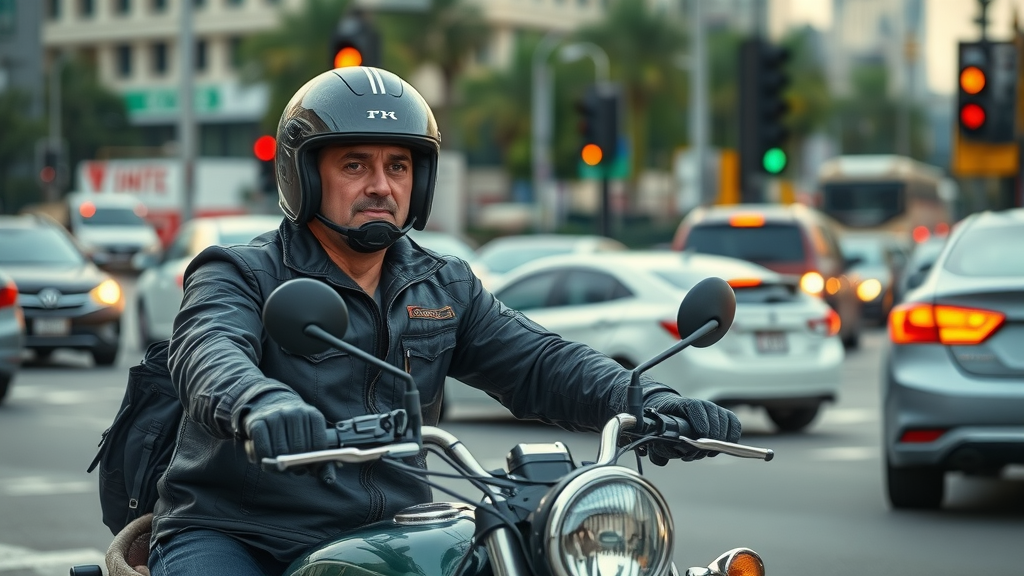
Maintaining a safe following distance is just as important. Give yourself adequate space to brake or swerve if a car stops suddenly, and avoid lingering in any vehicle's blind spot. When faced with an immediate road hazard, use smooth and controlled counter-steering or braking—not abrupt maneuvers that can throw you off balance. Practicing evasive techniques in a safe environment will sharpen your reflexes and confidence when it matters most.
Common Motorcycle Accident Locations: Where 70% of Motorcycle Accidents Occur
- Urban intersections and roads
- Rural highways
- Parking lots and driveways
Nearly 70% of all motorcycle accidents are concentrated at specific high-risk locations. Busy intersections in city environments pose the greatest danger, where unpredictable traffic patterns and frequent turns increase the odds of collision. Rural highways offer their own risks: higher speeds, less lighting, and wider curves can catch even experienced motorcycle riders off guard, especially when mixed with agricultural vehicles and wildlife.
Even lower-speed zones such as parking lots and driveways are not without peril. Pedestrians, reversing cars, and constrained spaces make vigilance crucial. Recognizing these hotspots and adapting your riding style appropriately will greatly reduce the risk of a motorcycle crash .
Actionable Tips for Reducing Your Risk in High-Accident Zones
- Defensive riding techniques for urban environments
- GPS route planning to avoid high-risk areas
- How to spot and avoid typical hazards in intersections
In city centers, defensive riding is your strongest defense. Always stay alert for vehicles turning left, and anticipate sudden lane shifts from distracted drivers. Use GPS apps that highlight accident hotspots or congested areas, allowing you to select safer, alternative routes whenever possible. Never assume a driver sees you—flash your lights or honk briefly if necessary, and always position yourself in the safest lane possible.

When entering an intersection, reduce your speed and scan both ahead and to the sides. Hazards like cars running red lights, cyclists, and sudden pedestrian crossings are far more common in these zones. Slowing down, making eye contact with drivers, and keeping your hands on the brakes can make all the difference when reaction time is the only barrier between a close call and a serious motorcycle accident.
Are Crash Guards Worth It? A Closer Look at Motorcycle Crash Protection
| Crash Guard Type | Pros | Cons |
|---|---|---|
| Frame Sliders | Reduce frame damage | May not protect foot/leg |
| Highway Bars | Improve lower limb safety | Add weight to motorcycle |
| Skid Plates | Protect undercarriage | Limited impact on other areas |
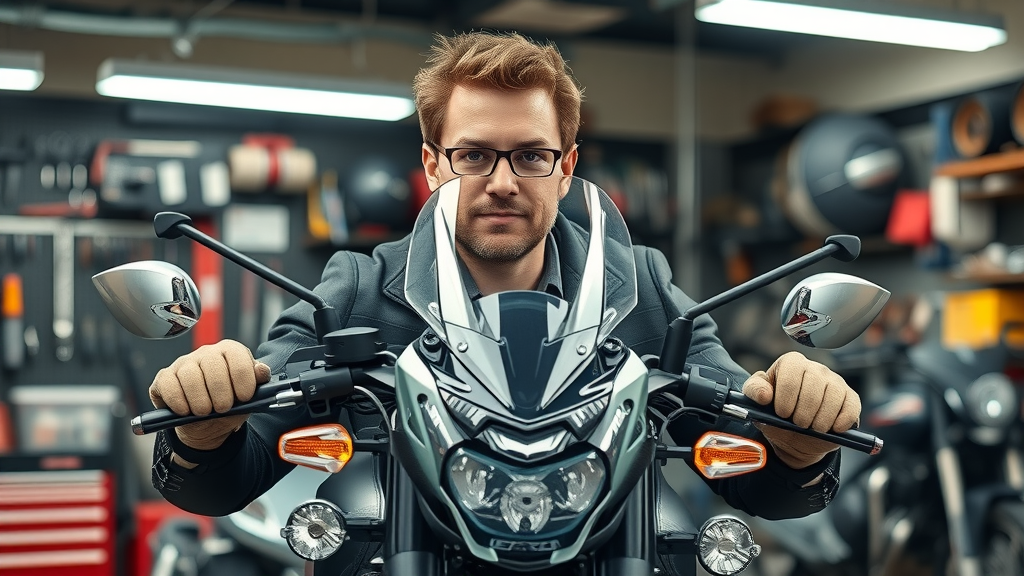
"A quality crash guard can turn a potentially life-altering motorcycle crash into a minor inconvenience." – Safety Expert
Crash guards —including frame sliders, highway bars, and skid plates—are designed to reduce the risk of harm during a motorcycle crash. While no accessory replaces safe riding practices, crash guards act as a valuable secondary line of defense. Frame sliders help protect costly bike components on impact, whereas highway bars can shield lower limbs from crushing injuries in a fall. Skid plates, meanwhile, safeguard the undercarriage from major scrapes and dents.
Each guard comes with unique trade-offs. Extra weight or changes in handling may require slight riding adjustments, but the increased protection is often worth it—especially for motorcycles ridden in urban or off-road settings. Ultimately, investing in the right crash guard adds another safeguard in your overall motorcycle accident prevention toolkit.
People Also Ask: Expert Answers on Motorcycle Accident Prevention
How to prevent accidents on a motorcycle?
- Consistent motorcycle safety checks
- Proper training and practice
- Avoiding risky behaviors such as speeding and distracted riding
Preventing motorcycle accidents relies on three pillars: thorough safety checks before every ride, ongoing skills training, and avoiding high-risk behaviors like speeding or riding under the influence. Make safety a habit, not an afterthought, and you’ll greatly reduce the likelihood of a motorcycle accident.
What is the 12 second rule on a motorcycle?
- Always scan the road 12 seconds ahead for hazards
- Gives motorcycle riders more time to react and prevent motorcycle crashes
The 12 second rule means always looking 12 seconds ahead of your current position while riding. This predictive habit provides vital seconds to anticipate and avoid sudden hazards—like braking vehicles or debris—helping motorcycle riders react in time to prevent motorcycle crashes.
Where do 70% of motorcycle accidents occur?
- Most motorcycle accidents occur at intersections in city settings
Nearly 70% of motorcycle accidents take place at intersections within urban environments. Dense traffic, distracted drivers, and frequent stop-and-go movement make intersections a danger zone for motorcycle riders.
Are motorcycle crash guards worth it?
- Crash guards can minimize injuries and damage during a motorcycle accident but are not a substitute for safe riding practices
While crash guards can minimize some injuries and prevent motorcycle damage, they should never replace core accident prevention practices. Used as a supplement, they offer valuable peace of mind and extra safety.
Essential Motorcycle Accident Prevention FAQs
- What protective gear provides the best motorcycle safety?
- How often should you conduct motorcycle safety checks?
- Are older motorcycles more prone to accidents?
For optimum motorcycle safety , always wear a DOT-approved helmet, armored jacket and pants, sturdy gloves, and boots. Conduct a quick pre-ride safety check before every outing and a full inspection monthly. While older motorcycles may lack the latest safety features, regular maintenance and proper upgrades can keep them just as safe as new models, provided the motorcycle driver remains vigilant.
Check Your Knowledge: Key Motorcycle Accident Prevention Takeaways
- Regular motorcycle maintenance is essential
- Helmet law compliance drastically cuts risk
- Most motorcycle accidents are preventable with vigilance and skill
- Defensive riding and awareness are your best tools
Motorcycle riding is exhilarating but comes with real risks. Preventing accidents requires ongoing commitment to maintenance, safety, and skill development. Your awareness and actions can make every ride safer, both for you and everyone you share the road with.
Your Next Steps Towards Motorcycle Accident Prevention
- Take a certified motorcycle safety course
- Share this resource with fellow riders
- Review and update your protective gear
Take control of your safety today by investing in your knowledge, your equipment, and your community. Motorcycle accident prevention is a shared responsibility—equip yourself and those around you for every ride.
Watch this quick guide for essential tips every motorcycle rider needs to know.
Learn from real-life accounts of riders who applied prevention strategies and walked away from near-misses.
Discover the key criteria for picking the safest, most comfortable motorcycle helmet for your riding style.
Protect Yourself: Stay Ahead with Proven Motorcycle Accident Prevention Strategies
Every time you start your motorcycle, make safety your top priority. Implement these motorcycle accident prevention strategies and take charge of your riding future—don’t let a single mistake derail your journey.
Invest in regular maintenance, follow helmet and traffic laws, practice defensive riding, and always prepare for the unexpected—your life and safety are worth it.
To further enhance your understanding of motorcycle accident prevention, consider exploring the following resources:
-
The article “ Tips to help prevent motorcycle accidents ” by State Farm offers practical advice on motorcycle safety, including the importance of regular inspections, wearing appropriate gear, and staying alert on the road.
-
The Hanover Insurance Group’s piece, “ Top 6 motorcycle safety tips ,” emphasizes the significance of taking safety courses, wearing DOT-compliant helmets, and understanding the benefits of anti-lock braking systems (ABS) for accident prevention.
By delving into these resources, you’ll gain valuable insights and strategies to further safeguard your riding experiences.
 Add Row
Add Row  Add
Add 
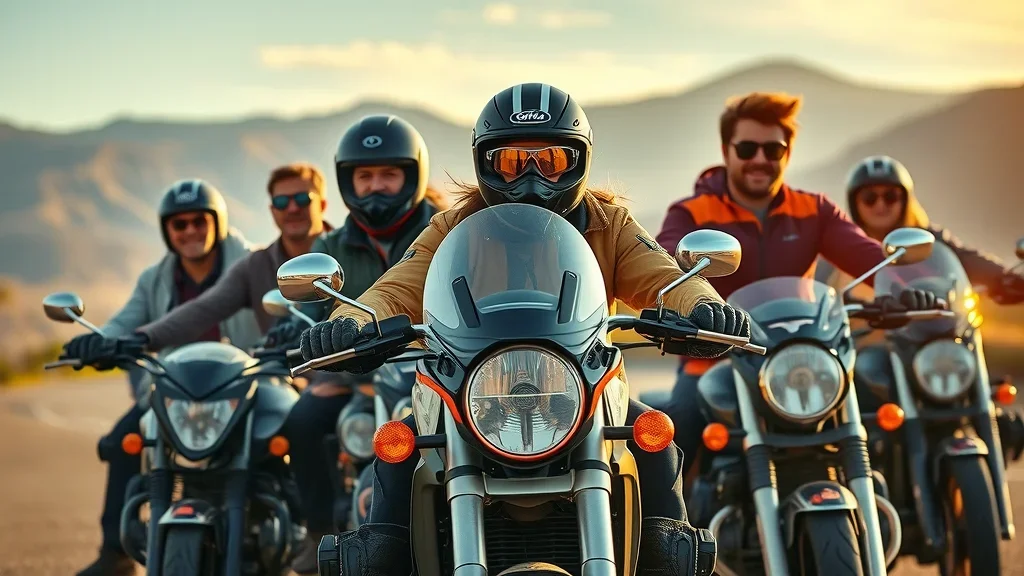
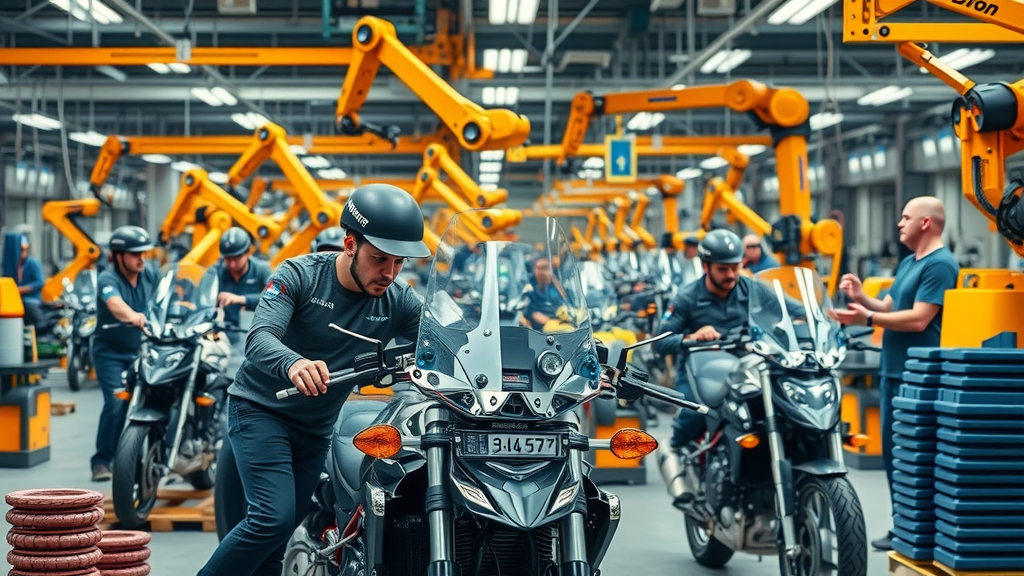

Write A Comment